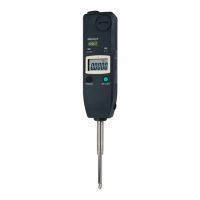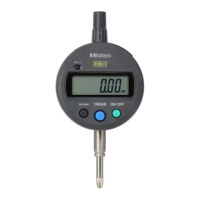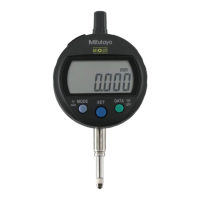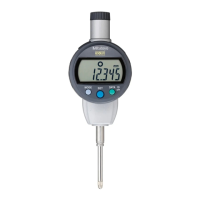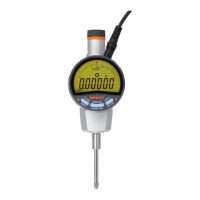4. DATA INPUT/OUTPUT
IMPORTANT
• For the “Initial setting” by RS-232 input, setting of both “Input/output format” and “ID
No.” are retained.
NOTE
•
•
For the detail of each item in the operation content, refer to Chapter 3.
“A##” indicates the setting command of the analog range. For information about the
analog range, refer to section 3.2.3. Switching the analog range (analog resolution)
during display of “range”
3 Error command
Operation content
Input
(External device -> this instrument)
Output
(This instrument -> external device)
Over-speed
CH**,Error 20CRLF
Overflow
CH**,Error 30CRLF
Communication
command error
CH**,Error 52CRLF
Tolerance setup
error
CH**,Error 90CRLF
Preset value error
CH**,Error 95PCRLF
Upper limit
value error
CH**,Error 95GCRLF
Lower limit
value error
―
CH**,Error 95DCRLF
Error
Cancel
CS**CRLF CH**CRLF
NOTE
•
•
“” indicates a space.
For detailed information about errors, refer to “5 ERROR DISPLAY AND ACTION”.
4.2.5 Communication sample
The example of RS-232 communication by using the hyper terminal (attached in the
Windows) is described below.
1 Start up the hyper terminal and select the setting of the digimatic indicator (ID-H side)
to the “Port setting”.
It is also possible to select “Port setting” by clicking on “File” → ”Properties”
→”Connect to” and press the “Configure…” button.
When it is necessary to set the initial setting, set “Port setting” as follows.
“Bits per second”:9600bps, “Data bit”:7bit, “Parity”: even
“Stop bits”:2bit, “Flow control”:Hardware
2 Continue to select some of the settings for the hyper terminal.
Click on “File”
→
”Properties”
→
”Settings” to change the setting as follows.
「Emulation」:ANSI
Click on “ASCII setup” to put the checking mark for check boxes: “Send line ends
with line feeds”, “Echo typed characters locally”, “Append line feeds to incoming line
ends” and “Wrap lines that exceed terminal width”.
No. 99MAH016B
4-7

